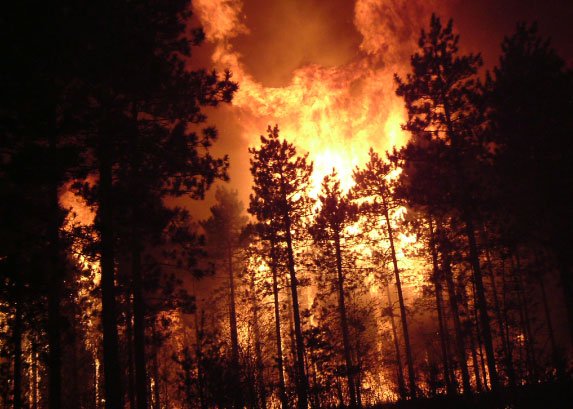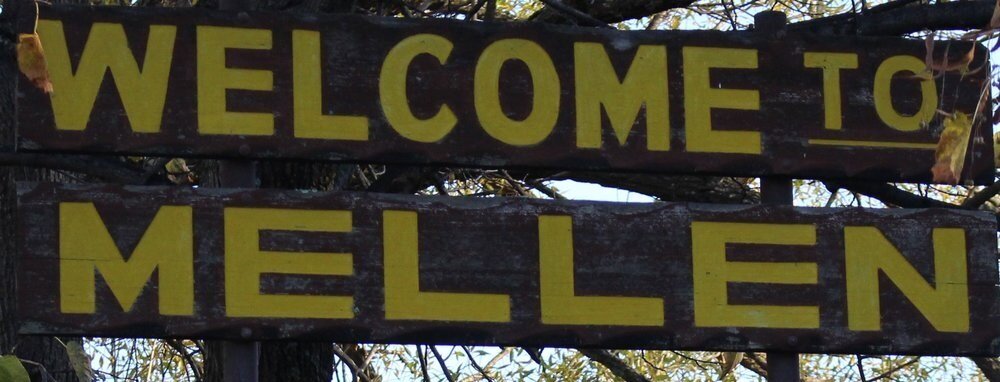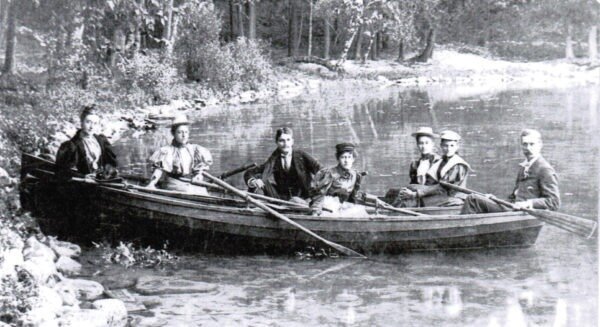Cryptid Profile: The Moreton Bay Serpent
Located on the eastern coast of Australia, and 8.7mi from Brisbane, Queensland, sits the 78mi long and 22mi wide Moreton Bay. Known as a lagoonal bay due to the off-shore barrier islands which restrict the flow of ocean water, the Moreton Bay sports a wide range of coral in its relatively shallow, 22ft deep waters. Home to a variety of ocean fauna including dolphins, sharks, dugongs, turtles, lobster, and over 8 species of whale (which include killer whales and blue whales), the bay has been recognized as an area of international significance and is protected as an Australian National Park. Due to the abundance of wildlife, the generally calm and warm blue waters, and the presence of over 360 islands, Moreton Bay is a major recreational area which is used by Australians year-round. So of course, there is thought to be a monster within it.
First officially reported in January of 1960 (although the sighting took place in December of 1959), the creature was dubbed Moreton Bay’s very own Loch Ness Monster. Seen by three eye witnesses - Ron Spencer (22 at the time), Jeanette Spencer (wife, 21), and friend John Belcher (22) – while in a boat fishing, the creature was encountered nearly two miles from shore. Mr. Spencer stated that while out on the water, a brownish-black head nearly 2ft wide surfaced from below the water and rose up to nearly 3ft not far from their boat. The unknown creature appeared to look around the area for a moment before spotting their boat, it then quickly dived back below the surface causing a huge splash.
Startled and slightly scared, the trio made their way back to shore, but the creature would not allow them to do so unaccompanied. Every so often, the head would break the surface again. Except this time, it got closer with every appearance. Ron Spencer stated that the creature seemed curious about what the boat was, like it was almost trying to get a good look at all three passengers. The thing eventually stopped surfacing and swam away as they got closer to shore. It was described as having a wide flat head, brownish-black skin like a toad, far set eyes, and no visible neck.
A few days later after the December sighting, another witness sighted the creature while out on the water near Deception Bay on January 1st, 1960. A man by the name of Mr. Nigel Tutt claimed that while fishing with two other people (his daughter Carol, 16, and her friend Joy), a brownish-black creature that resembled an 18ft eel rose almost 4ft out of the water, stared at them, and then dove back under the surface. This occurred at a distance of less than 8ft from his boat and in 20ft of water. Like the previous sighting, the creature was described as having a wide flat head and far set eyes. Only this time though, the witness stated that he was able to see a wide fish-like mouth, like that of a catfish, and that there were a series of small fins spread out along the body.
After this second report, more witnesses began coming forward with their own sightings of the Moreton Bay Serpent as well. A few days after a local newspaper ran a story about Mr. Tutt’s sighting, a man by the name of Dave Manners reported his. Mr. Manners stated that while on vacation with his mother, the pair spotted the creature while fishing from land near Skirmish Point. While standing along the shoreline, the two witnesses were easily able to see a serpent-like creature break the surface of the water nearly 20 yards out. The creature then started swimming in an undulating, up and down motion along the shoreline, diving and resurfacing sporadically as it went.
Amazed by what they were seeing out in the water, the pair followed the creature on foot as it swam for nearly a mile before they eventually grew tired and returned to their gear. Like the previous witnesses, Mr. Manners described the creature as having a flat head a body nearly 2ft wide, brownish-black skin, and a length of nearly 18ft. But unlike the other witnesses, Dave and his mother were able to study the creature for more than a few seconds. Along with the standard features, Mr. Manners also described the creature as having wide, flat nostrils, and an odd-looking fin not too far below its head.
For the next few months, reports of the creature in Moreton Bay were few and far between. Many believed the creature moved back out in the open ocean, or that something had happened to it. The few sightings of it that did get reported in the months following January were generally explained by misidentifications of known animals such as dugongs, turtles, or whales. Many professional fishermen in the area believed that from the very beginning, the Moreton Bay Serpent was nothing more than a large turtle that took witnesses by surprise. But those who saw the beast were adamant that what they witnessed was not a known creature. And from the looks of it, there were not going to be any answers on the mystery anytime soon. That is until the creature came back to Moreton Bay.
In October of 1960, a woman by the name of Mrs. Carr saw an unknown creature swimming in the reef near Bribie Island. The woman described the creature as having a long body with a large head. It rose up out of the water as if to get a better look at her before sinking back down below the surface.
Later that same month, another witness by the name of Mr. Bailey spotted a creature in the water near Redland Bay. The man described the creature as being larger than a hippopotamus, having a large head and long neck, and undulated up and down through the water.
At this same time, a report was made by a woman who claimed that she saw the Moreton Bay Serpent not that year, but 2 years prior in 1958 but never felt compelled to speak about it until others started doing so. The witness, whose name was Mrs. M. Chadwick, claimed that while her and her husband were out on the water near St. Helena Island, a large flat head rose out of the water close to their boat. The unknown creature had large eyes that were set far apart and a wide mouth that stretched along nearly half the head. The creature caused such fear in the pair that they sped away as fast as they could.
Near the end of 1960, the serpent went quiet again. The usual quick sightings would be made but as stated above, they could easily be explained by misidentification of known animals. Appearing to have moved on from the area, an official Moreton Bay Serpent sighting would not be reported again until September of 1962. The report would come from a man named Robert Duncan and would be one of the last official sightings of the creature.
Mr. Duncan stated that while out walking the beach of Bribie Island one morning, he saw a serpent-like creature rise out in the water. Immediately grabbing his binoculars to get a better look, Mr. Duncan watched as the creature appeared to be playing at the surface. The large creature rolled around and dove repeatedly for nearly 5mins before it left the area. The witness described the serpent as appearing nearly 15ft long, having a large head on a thin neck, fins along the lower half of its body, brownish-black lumpy skin, and being as thick as a small whale. It also shot out of its nostrils what appeared to be water vapor, almost reminiscent of a whale shooting water out of its blowhole.
Soon after this sighting, the creature was not seen in Moreton Bay again.
So, what was the Moreton Bay Serpent? Was it in fact a true sea serpent? Many people believe that it was. The many witnesses all reported roughly the same thing with each of their sightings, a serpent-like creature that was around 18ft long, had a wide head with far set eyes, brownish-black skin not like a fish, a wide mouth, small fins, and was more curious than menacing. Could they all be lying about what they saw?
Dr. Bernard Heuvelmans didn’t think so, he theorized that what the witnesses were seeing was in fact what he called a Many-Finned sea serpent. These types of serpents are characterized by their generous size and thin neck supporting a large head. Their body is typically segmented and often has a number of fins sticking out along each side. The Many-Finned also has been described by Heuvelmans as taking physical breaths at the surface. These breaths are often followed by water vapor shooting from its mouth or nose. This sounds almost exactly like what the witnesses around Moreton Bay were seeing. So, case closed, right? Not if you ask skeptics.
Many people believe that what the witnesses were actually seeing was nothing more than misidentified dugongs, basking sharks, or oarfish. The reasoning behind these claims are as follows: the flat face with wide set eyes are characteristics of both dugongs and oarfish. The color most often described is that of a basking shark. The strange looking fin seen behind the head of the serpent is also found on an oarfish. The wide mouth reported are common characteristics of basking sharks and dugongs. All of these creatures are reported as having lengths between 10ft and 56ft depending on how old each creature is.
Could these common and known ocean creatures truly be responsible for the Moreton Bay Serpent sightings? For some sightings, yes. For all of them, no. Yes, the dugong, basking shark, and oarfish all possess characteristics that witnesses claim to have seen, but none of these creatures have the ability to raise their heads nearly 4ft out of the water and watch a boat full of people. These known animals do not have the ability to undulate up and down at the waters surface, and none of them are known to possess more than two pectoral fins on their sides.
So, could the Moreton Bay Serpent actually be a Many-Finned serpent as Dr. Heuvelmans proposed? Or were the residents along the coast of Moreton Bay just getting caught up in Monster Fever and letting their imaginations get the best of them? We many never know. And it appears it’s going to remain unsolved until the creature ever decides to come back to Moreton Bay.
-The Pine Barrens Institute
*Image Credit: https://pristichampsus.deviantart.com/art/Many-Finned-Sea-Serpent-151422206
Do you have a strange tale, family legend, or odd sighting you would like to report? Get in touch with us here to share what you know!
Want more strange stories in your life? If the answer is yes, then make sure to check out our books ‘Monsters In Print: A Collection Of Curious Creatures Known Mostly From Newspapers’ and ‘Ghosts In Print: An Assemblage of Spirits, Spooks, and Specters From Newspapers of Old’, both available from Amazon!
Make sure to also check out our shop for official PBI shirts, totes, buttons, and stickers!































